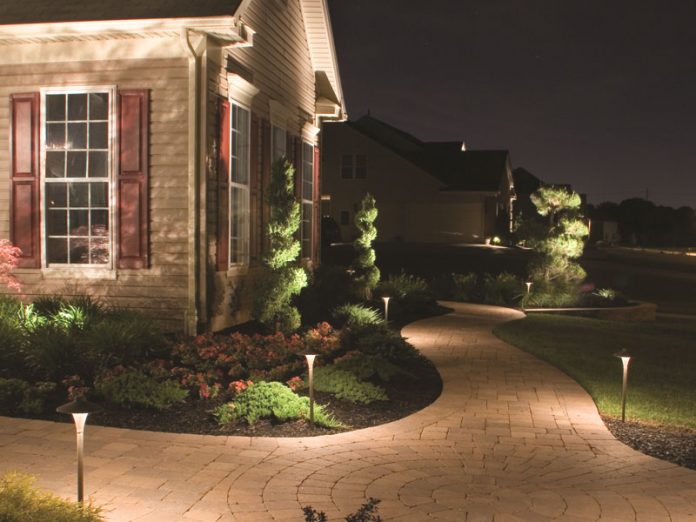The strategic use of outdoor lighting will not only ensure your safety after sunset but can also add drama and dimension to your landscape. Outdoor lighting techniques can be used to highlight your favorite features within the backyard and conceal others in shadow. Consider using some of the following techniques to sculpt and define your landscape after dark:
- Uplighting
Uplighting is generally used to place tall features such as pillars, trees, and sculptures on display. Low-voltage lighting fixtures or spotlights—depending on your desired effect—can be installed at the base of a focal feature and angled upward. The beams of light will most likely catch the contours of the object as they travel upward and can emphasize the interesting shape of the tree or sculpture you have decided to highlight. This technique can also be used to draw attention to a beautiful tree canopy or the underbelly of a lofty pergola.
- Shadowing or Silhouetting
In this technique, lighting fixtures are angled in a similar way to how uplighting is achieved. However, in shadow, the features on display are situated snugly beside a tall wall or other vertical structure onto which their silhouettes can be projected. Depending on how this technique is executed, it can also be referred to as silhouetting. Characterful trees and shrubs with twisting branches are great candidates for this outdoor lighting technique, which is often used to enhance a home’s exterior. Plants that wave in the breeze can create particularly captivating moving murals. An upward-angled light can create shadows far larger than the objects themselves for a formidable impact.
- Downlighting or Moonlighting
Downlighting, or moonlighting, involves installing down-angled lighting fixtures in high places. The intensity of the light can be customized to achieve a certain mood and is often best kept low, as bright overhead lights can make you feel overexposed. Soft, cool-toned lighting can mimic the romantic look and feel of natural moonlight. Downlighting offers the simple benefit of improving visibility and allowing your favorite low-lying features to be seen. Keep your stunning patio pavers illuminated while ensuring that the area can be easily navigated.
- Walkway Lighting and Step Lighting
Certain outdoor lighting techniques serve to enhance the appearance of a landscape while also assuring the safety of anyone navigating it in the dark. These are absolutely essential to any balanced landscape design. Walkway lighting can be achieved using lighting fixtures of various sizes and styles. Fixtures in a particular style may wash your walkways in a distinct atmosphere, be it romantic or mysterious. They are generally angled downward to prevent the creation of an unpleasant glare.
- Pool Lighting and Underwater Lighting
Boost the resort-like appeal of your swimming pool by investing in underwater lighting. Colored lights can give a pool or hot tub fun and inviting appearance, while simpler alternatives can serve to showcase the mosaic or motif accessorizing the floor or walls of a pool. Pool lighting should also illuminate the entire area surrounding the pool to avoid accidents and keep pets and children safe.















